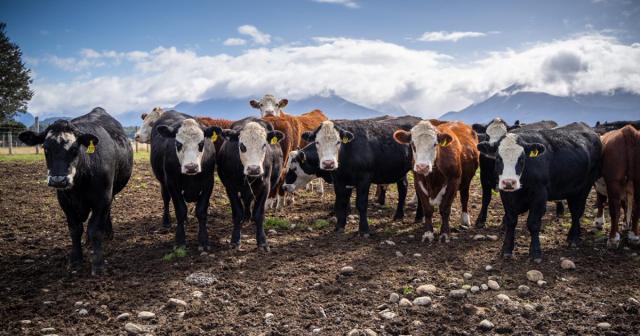Cattle coming out of the winter often get a drench in the springtime, but this may not be necessary for all animals. Wormwise Vet Mary Bowron outlines factors to consider.

Whether an animal is wormy enough for a drench to be cost-effective depends on various things, including their level of immunity and nutrition available.
The age at which young cattle develop a robust immunity to parasites is typically around 12–18 months of age, but how solid this immunity is depends on a number of factors.
Cattle that are well-conditioned, at or above target body weights and with optimal grazing (residuals of 1500kgDM/ha or better) will be able to cope with parasites better than poorly grown animals that have been under nutritional stress over the winter.
A well-grown cow-reared R1, that was weaned at 250kgs at 6–8 months of age, may only need a drench at weaning, one in the spring and that will be them for life.
Compare this to an artificially reared animal, weaned around 100kgs, and grazed in a highly contaminated pasture system. These may have had multiple drenches over the winter to support their growth, but if behind their target weights, their capacity for coping with parasites may be a lot less.
Setting up cattle to achieve good growth rates in their first year comes down to the system. Avoiding a monoculture system with only young stock rotating year on year on permanent pasture is paramount. Animals which have been grown really well in the first 12 months are able to cope with parasites better in their second spring. Therefore, less drenching is required. It’s a win on so many levels.
A young animal provided with plenty of protein and energy will be able to fight the parasite battle a lot more effectively than one under nutritional stress. Depending on the time of the year, permanent pasture may not always provide enough energy and protein for fast-growing R1’s who are also developing their parasite immunity. Alternative forages or supplements can ensure they continue to thrive.
Heritability of parasite resistance in cattle can be quite high in some breeds, research is ongoing to explore the commercial application of this.
For their first autumn/winter the main species of worm we really need to worry about are; the intestinal worm Cooperia, and the stomach worm Ostertagia.
Well grown beef weaners are likely to have developed substantial immunity to Cooperia by nine months of age. However, the poorer calf that has grown slowly since birth can still be susceptible to this worm at 12–15 months.
Immunity to Ostertagia takes longer to develop. Even R2 and adult cattle can be affected if they have been under nutritional pressure. This worm can pause its development in the stomach lining and resume its life cycle later, leading to poor growth that may respond to drenching.
This is why many advisors recommend routine treatment of yearling cattle wintered on pasture to eliminate Ostertagia and maximise spring feed benefits. However, some farms achieve very good performance without treatment or only treat the smaller or slower-growing animals.
When choosing drenches, treatments for Cooperia should contain levamisole, while those for Ostertagia should include a drench from the mectin family.
Regular drench checks, (faecal egg counts 10–14 days after treatment), are essential to ensure the drench programme is effective. Though it’s better to do these on calves, as explained below.
Interpreting faecal egg count results for cattle is not as straight forward as it is for sheep, and a low number doesn’t necessarily mean no worms, especially in yearlings and older cattle.
Regular monitoring of growth rates is therefore also important. Targeted selective drenching of under-performing animals not only lowers drench usage but ensures refugia is generated as well.
Parasite treatment of adult cattle is seldom needed, unless they are under nutritional stress. Other diseases such as BVD or Johnes can cause ill thriftiness as well, it’s not always parasites.
Well fed, well-conditioned cattle coming out of the winter may not need a drench. Weigh up the evidence and maybe you could save some money and time by not drenching.